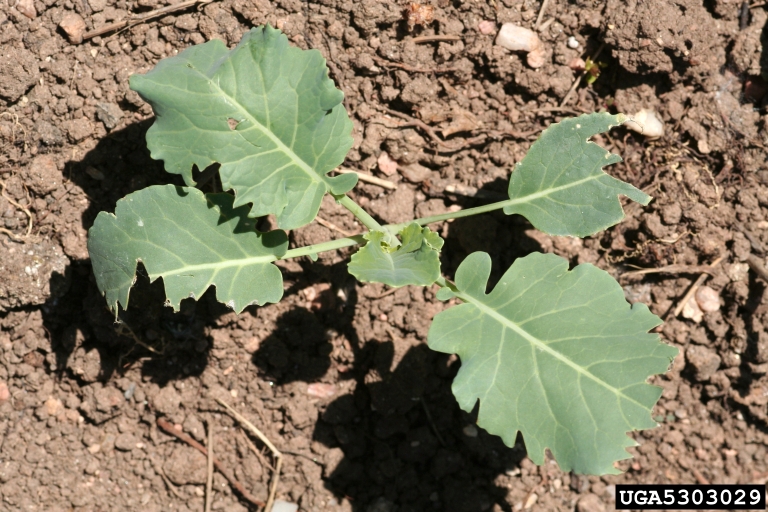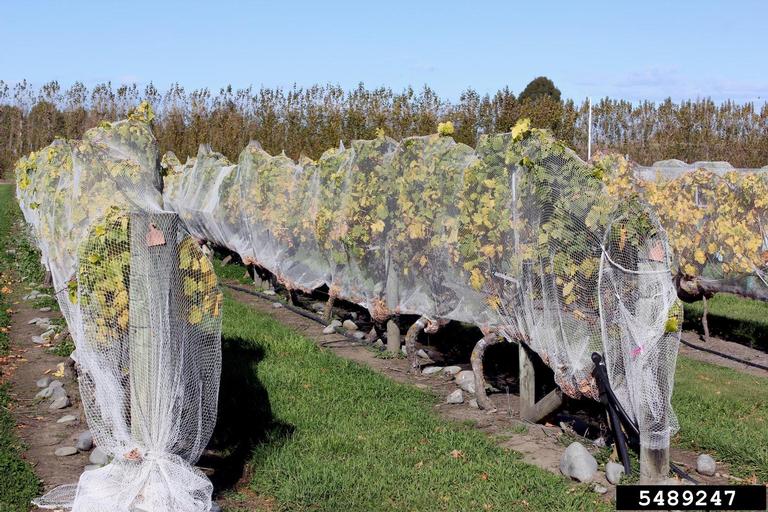 Bird Damage to Edible Crops - June 27, 2018 Jeff Schalau, Agent, Agriculture & Natural Resources University of Arizona Cooperative Extension, Yavapai County I love birds and bird watching, but I also get calls from home gardeners regarding bird damage to various crops. Some eat leaves and flowers, others peck fruit, and others peck into tree trunks and structures. Managing birds takes ingenuity and persistence. First and foremost, you must remember that most bird species are protected under the Migratory Bird Treaty Act of 1918. In Arizona, the exceptions are English sparrows, European starlings, and feral pigeons (rock doves). These three non-native bird species can be managed (lethally if necessary) without issuance of a permit. It is illegal to harm or harass all other bird species without a permit from the US Fish and Wildlife Service. Given the seriousness of committing a federal crime, managing nuisance birds absolutely requires use of integrated pest management (IPM) techniques. IPM is a stepwise process that utilizes planning and minimizes negative impacts on non-target organisms and the environment. The steps of IPM are: (1) identify the pest, (2) monitor damage until it becomes unacceptable, (3) apply multiple management strategies appropriate for the pest, (4) monitor effectiveness of the control strategies, and (5) if damage continues, repeat steps 1 through 4. Most bird conflicts can be resolved by modifying habitat. The most direct approach is applying exclusion techniques. Well-placed bird netting will either prevent or discourage most birds from causing damage to crops. When protecting fruit trees, try to close the netting around the trunk to avoid trapping birds inside. Easier said than done you say? I understand – I had to use bird netting to extend my garden fence from 4 to 7 feet because our chickens (high-strung leghorns) were flying over it. If the crop is valuable enough and/or the damage significant enough, it may warrant more permanent coverage. Cages can be constructed to cover individual plants, a raised bed, or more. I have seen a few gardens completely covered with one inch poultry wire stretched over a galvanized pipe frame. This also works for rock squirrels and woodrats that climb fences. Most bees and other small pollinators can fly through the wire to do their work and forage. Similarly, lizards, small snakes, and predatory insects can also pass through. Frightening devices can be effective, but usually only for a short time. These include recorded distress calls, pyrotechnics (explosions), and scaring devices (streamers, owl decoys, hawk silhouettes, scare-eye balloons, scarecrows, etc.). Birds often habituate to frightening techniques. Therefore, they should only be used when damage levels are low and should be varied in placement every few days. Pyrotechnics may bother neighbors and/or require permitting. Tactile repellents can be effective at changing bird roosting sites but are of little effect for herbivory. These products range from gooey substances to porcupine wire devices. If you are trying to manage roosting or structure damaging birds, see the May 6, 2015 Backyard Gardener column (available on-line at the URL below). I have also included several resources and photos with the on-line version of this column. Over the years, I have seen lots of goldfinch damage. Goldfinches usually focus on sunflowers where they land on a stem or leaf petiole and tear off small pieces of leaf and eat it. With few wild sunflowers growing in the early summer, this year, I have seen what I think is goldfinch damage on sunflowers, squash and other cucurbits, green beans, and even eggplant. The damage is usually not detrimental to the crop. Go to the on-line version of this column (see URL below) to view a video of goldfinches eating sunflower leaves. Similarly, quail are known to eat seedlings. Here, floating row cover can protect the emerging seedlings from quail. It may be tempting to break out the pellet gun to take care of a “bird problem”. However, there are local ordinances that could make it illegal to fire pellet guns as well as conventional firearms, slingshots, or bow and arrow where you live. In general, it is unlawful to discharge a firearm within ¼ mile of any structure and this distance is often greater in urban areas. If you are not sure, call your local law enforcement agency. It is your responsibility to know the local laws. Follow the Backyard Gardener on Twitter – use the link on the BYG website. If you have other gardening questions, call the Master Gardener help line in the Camp Verde office at 928-554-8992 or e-mail us at verdevalleymg@gmail.com and be sure to include your name, address and phone number. Find past Backyard Gardener columns or provide feedback at the Backyard Gardener web site: http://cals.arizona.edu/yavapai/anr/hort/byg/. Resources  Leaf damage by house finch (Carpodacus mexicanus) on broccoli (Whitney Cranshaw, Colorado State University, Bugwood.org).
Leaf damage by house finch (Carpodacus mexicanus) on broccoli (Whitney Cranshaw, Colorado State University, Bugwood.org). Netting to prevent damage by Eurasian blackbirds and starlings (Whitney Cranshaw, Colorado State University, Bugwood.org).
Netting to prevent damage by Eurasian blackbirds and starlings (Whitney Cranshaw, Colorado State University, Bugwood.org).Additional Resources Preventing Bird Damage University of Massachusetts Amhurst, Center for Agriculture, Food and the Environment Note: Some control methods recommended in this publication may not be legal in Arizona. Consult the Arizona Game and Fish Department for more information. ag.umass.edu/vegetable/fact-sheets/preventing-bird-damage Bird Management Options for Fruit Growers Michigan State University Extension Note: Some control methods recommended in this publication may not be legal in Arizona. Consult the Arizona Game and Fish Department for more information. msue.anr.msu.edu/news/bird_management_options_for_fruit_growers |